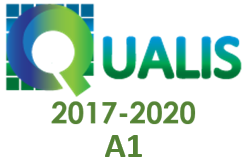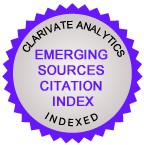Biblical text and “translation”: the “divine voice” at the human level of coenunciation
DOI:
https://doi.org/10.5007/2175-7968.2016v36n2p205Abstract
Currently, biblical text has a multiplicity of versions spread out. These versions go from one pole of literality to the other of liberty in translation. In sight of these facts and of the specificities of biblical text, this paper focuses on the process of coenunciation in order to evaluate how textual-discursive organization is configured in these different versions, aiming at establishing a relation with the intended audience for each of these versions. The comparative analysis between representative versions of each of the poles, having more than one direction of investigation, shows that such relations go from creating effects of great distancing between producer and receptor (typical of literal versions, whose discourse is clothed in injunctive force that demands from the believers the fulfillment of all that is required), to creating effects of a highly marked approximation (typical of free versions, whose discourse seeks to establish a pact with the reader, in an evident relation of cooptation).References
BENVENISTE, E. Problemas de linguística geral I. São Paulo: Pontes, 2005.
BÍBLIA SAGRADA. Almeida revista e atualizada. Barueri: Sociedade Bíblica do Brasil, 1993.
______. Nova tradução na linguagem de hoje. Barueri: Sociedade Bíblica do Brasil, 2000.
______. Nova versão internacional. São Paulo: Vida, 2001.
______. Bíblia de Jerusalém. São Paulo: São Paulo: Paulus, 2002.
______. A mensagem. São Paulo: Vida, 2011.
CAMPOS, H. Metalinguagem e outras metas: ensaios de teoria e crítica literária. São Paulo: Perspectiva, 2010a.
______. A arte no horizonte do provável. São Paulo: Perspectiva, 2010b.
COENEN, L.; BROWN, C. Dicionário internacional de Teologia do Novo Testamento. São Paulo: Vida Nova, 2000.
CRYSTAL, D; DAVY, D. Investigating English style. London: Longman, 1992.
ECO, U. Lector in fabula. São Paulo: Perspectiva, 1988.
FIORIN, J. L. As astúcias da enunciação: as categorias de pessoa, espaço e tempo. São Paulo: Ática, 1999.
______. Introdução à linguística. São Paulo: Contexto, 2002.
FRAME, J. M. A doutrina da palavra de Deus. São Paulo: Cultura Cristã, 2013.
HENDRIKSEN, W. Mateus. São Paulo: Cultura Cristã, 2010.
HILGERT, J. G. Variações interacionais na construção da compreensão na fala. In: PRETI, D. F. (Org.). Variação na fala e na escrita. São Paulo: Humanitas, 2011, v. 11, p. 219-247.
JUBRAN, C. C. A. S. Funções textuais-interativas dos parênteses. In: NEVES, M. H. M. (org.). Gramática do Português Falado. Campinas: UNICAMP, v. 7, 1999, p. 131- 158.
______. Parentetização. In: JUBRAN, C. C. A. S.; KOCH, I. G. V. Gramática do português culto falado no Brasil. V. 1. Campinas: UNICAMP, 2006.
KONINGS, J. Tradução e traduções da Bíblia no Brasil. In: GOHN, C.; NASCIMENTO, L. A Bíblia e suas traduções. São Paulo: Humanitas, 2009.
MAINGUENEAU, D. Pragmática para o discurso literário. São Paulo: Martins Fontes, 1996.
MILLER, S. M; HUBER, R. V. A Bíblia e sua história: o surgimento e o impacto da Bíblia. Barueri: Sociedade Bíblica do Brasil, 2006.
NEVES, M. H. M. As estratégias discursivas e suas implicações na relação entre oralidade e escrita: um estudo do parêntese na crônica. Linguística [online]. Madri, ALFAL, vol. 27, n.1, p. 77-97, 2012.
______. Referenciação: identificação e descrição de referentes. Inédito.
NIDA, E. A. Toward a science of translating: with special reference to principles and procedures involved in Bible translating. Leiden: E. J. Brill, 1964.
______; TABER, C. R. The theory and practice of translation. Leiden: Brill, 1982.
SANTAELLA, L. Transcriar, transluzir, transluciferar: a teoria da tradução de Haroldo de Campos. In: MOTTA, L. T. Céu acima: para um tombeau de Haroldo de Campos. São Paulo: Perspectiva, 2005.
SCHOLZ, V. 40 anos de Bíblia na Linguagem de Hoje. Barueri: Sociedade Bíblica do Brasil, 2014.
SIMMS, K. (Org.). Translating sensitive texts: linguistic aspects. Amsterdam, Atlanta: GA, 1997.
ZEILINGER, F. Entre o céu e a terra: comentário ao sermão da montanha (Mt 5-7). São Paulo: Paulinas, 2008.
Downloads
Published
How to Cite
Issue
Section
License
Copyright Notice
Authors hold the copyright and grant the journal the right for their articles' first publication, being their works simultaneously licensed under the Creative Commons Attribution License (CC BY), which allows the sharing of such works with its authorship acknowledged and its initial publication in this journal.
Authors are allowed to enter into separate additional contractual arrangements for the non-exclusive distribution of the journal's published version of the work (e.g., post it to an institutional repository or as a book chapter, with an acknowledgment of its initial publication in this journal).






















































